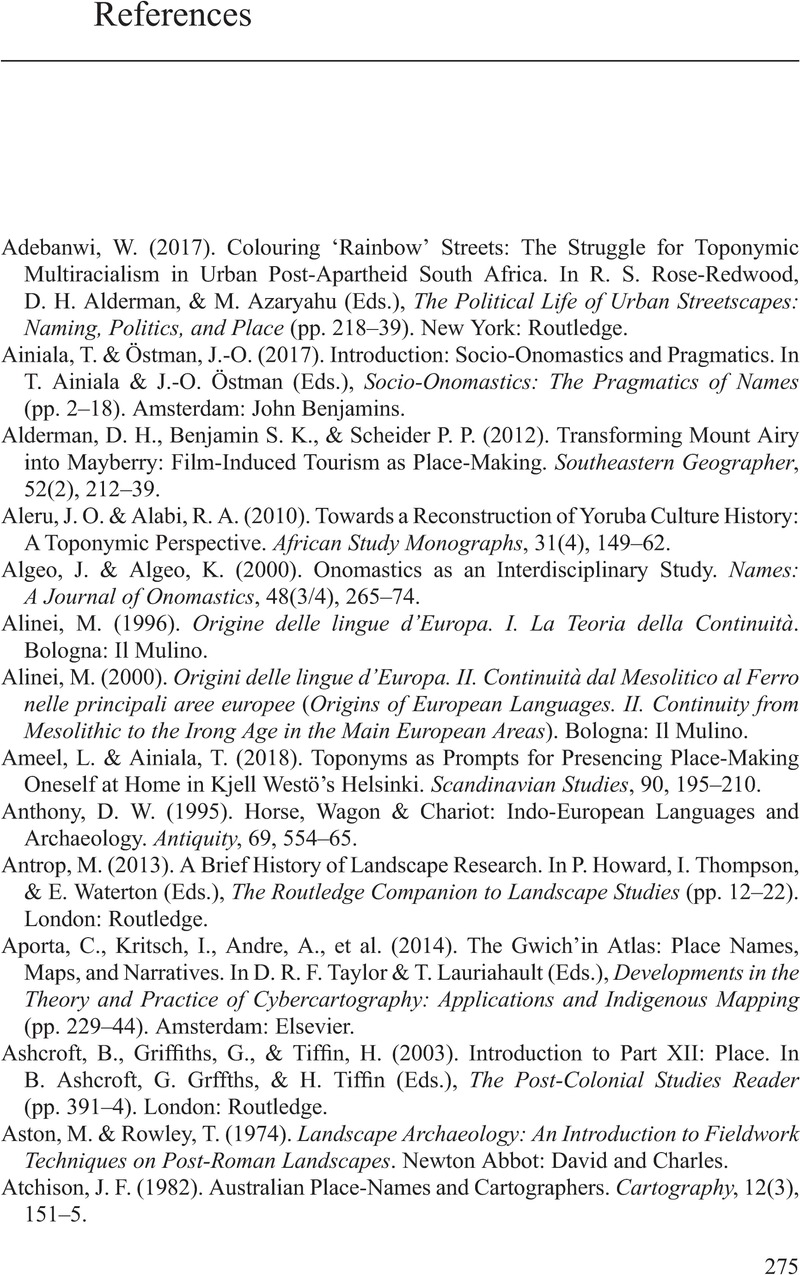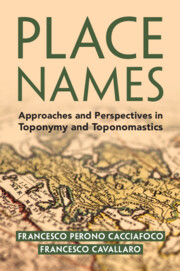Book contents
- Place Names
- Place Names
- Copyright page
- Contents
- Figures
- Tables
- Preface
- Acknowledgements
- 1 Introduction
- 2 Language Change
- 3 Historical Toponomastics
- 4 Toponymy and the Historical-Linguistic Reconstruction of Proto-Languages
- 5 Diachronic Toponymy
- 6 Landscape and Toponymy
- 7 Historical Toponomastics and Historical Geography
- 8 Synchronic Toponymy
- 9 Place Names and Society
- 10 Toponymy and Cartography
- Glossary
- References
- Index
- References
References
Published online by Cambridge University Press: 02 March 2023
- Place Names
- Place Names
- Copyright page
- Contents
- Figures
- Tables
- Preface
- Acknowledgements
- 1 Introduction
- 2 Language Change
- 3 Historical Toponomastics
- 4 Toponymy and the Historical-Linguistic Reconstruction of Proto-Languages
- 5 Diachronic Toponymy
- 6 Landscape and Toponymy
- 7 Historical Toponomastics and Historical Geography
- 8 Synchronic Toponymy
- 9 Place Names and Society
- 10 Toponymy and Cartography
- Glossary
- References
- Index
- References
Summary

- Type
- Chapter
- Information
- Place NamesApproaches and Perspectives in Toponymy and Toponomastics, pp. 275 - 296Publisher: Cambridge University PressPrint publication year: 2023



